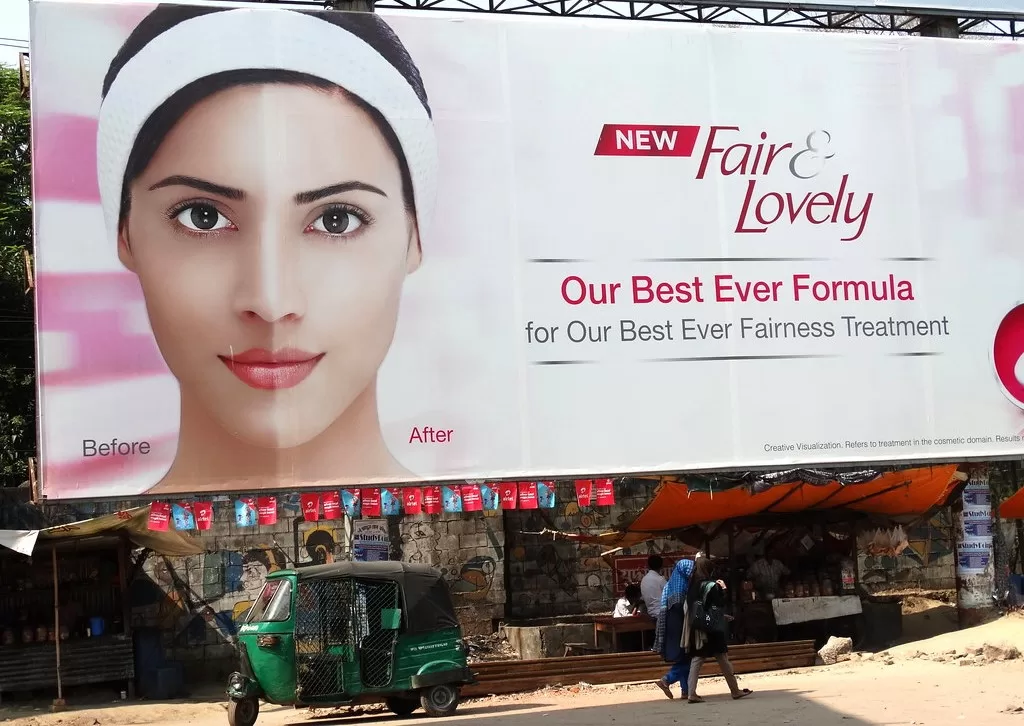By Noor-ul-wara for Invisiblites
From a very young age, I imagined people with fair skin being more respectable and attractive while individuals with darker skin tones were less attractive. But, as I matured and started questioning my thoughts, I often wondered how an idea like this could come in my childhood mind as I clearly remember no one ever mentioning this to me directly. This is when the equation became clear in my mind– I was so influenced by my surroundings that I was fully convinced paler skin signified beauty and darker skin was something to be ashamed of.
The Cultural and Historical roots of fair skin ideals:
In ancient times, fair skin was linked with the upper class or aristocracy. The wealthier people had the privilege of working indoors which protected their skin from harmful rays of the sun, so they were able to maintain fairer skin while the lower class had to work under the sun in the fields which made their skin darker. Consequently, fair skin translated into beauty, wealth, and privilege. It became a symbol of status and entitlement. It was also considered a yardstick of innocence and chasteness. This cultural influence is a major factor that contributes to the obsession with white skin in Asia and the deep-rooted unjust beauty standards.
Colonialism’s Influence on Asian beauty standards:
Asia’s colonial history greatly contributes to the belief that white is beautiful and that white is powerful. This region has been the melting pot of many different cultures. European powers, such as the British, French, Spanish, and Dutch were the main colonizers in South Asia. Other than Europeans, Americans and Japanese have also colonized Southeast Asian countries. The rulers being fair-skinned and the natives being ‘dark’ or ‘black’ created a distinction never unprocessed. The fair-skinned foreigners were seen as superior to the local people. Their skin color was taken as a sign of power and affluence. Gradually, this foreign concept of beauty brought by outsiders became a beauty standard for the people of Asia. People associated fair skin with beauty while darker skin tones were directed towards unattractiveness. Even today, the signs of colonization are still visible. For example, film industries prefer fair-skinned actors and models for their films, dramas, ads, and campaigns. These actors and actresses are given prominent roles while darker people are often portrayed as villains and given negative roles. These distinctions are seen mostly in India, Pakistan, Bangladesh, and several other Asian countries.
Colorism and the Beauty Industry: Profit or Prejudice?
The beauty industry has played a momentous role in further lighting the flame of fair skin obsession among Asians. It has vastly contributed to the idealization of fair skin among common people. Many skin whitening products like creams and lotions have been manufactured and greatly advertised. The preference for fair skin was already found in common folks but it was dangerously exploited by the manufacturing of these whitening products. People use these whitening products with the hopes of making their skin color fairer. A survey conducted among female university students showed that 30% of the students agreed that the use of skin whitening products is a good practice. The deeply ingrained obsession with white skin helps expand the beauty industry further and will continue to do so until it ends. By 202, the skin whitening industry is projected to be worth over $24 billion.
How a Bengali Woman Pioneered the Concept of Female Utopia – Invisiblites
Negative Impacts:
Fair skin obsession in Asia has had many harmful psychological, social, and cultural effects on the lives of individuals as well as on societies. This unhealthy obsession with fair skin has been a part of South Asian culture for a long time and consequently, has had its fair share of influences. One of the major impacts of this obsession is the discrimination that comes with it. This obsession plays a fair role in the perpetuation of these unjust beauty standards. Fair-skinned people are preferred in areas like employment, marriage, and education while people with darker skin are discriminated against. This discrimination further leads to mental health problems like anxiety, low self-esteem, self-hatred, and depression. It leads to an increase in inequality and limits the opportunities for people with darker skin. Another significant impact of the obsession with fair skin is the severe harm caused by using skin-lightening products. These products contain harmful chemicals like mercury, and hydroquinone which can cause permanent damage to the skin. They can cause skin issues like skin cancer, skin ulcers, and loss of melanin.
Final Remark:
Asian obsession with fair skin is a deep-rooted idea that might take quite a long time to submerge. It is important to focus on the historical and cultural influences that inspire and perpetuate this concept further and work on suppressing them. We all need to put the collective effort in order to move towards an inclusive, more accepting, and equal society that appreciates the diversity of skin tones.
Noor-ul-wara is a content writer, blogger, and copywriter. She has written several articles, blogs, and social media posts. Her interests include art, history, culture, and politics.
Photo credits: Flickr via Creative Commons
Write for Invisiblites, guidelines at Write For Us – Invisiblites

Very well written
Your writing style is clear, concise and compelling. Excellent work!